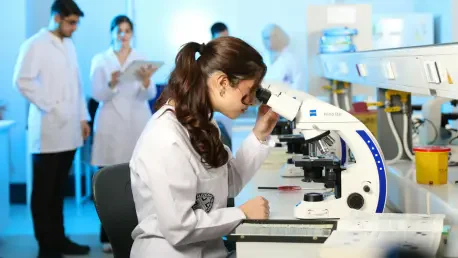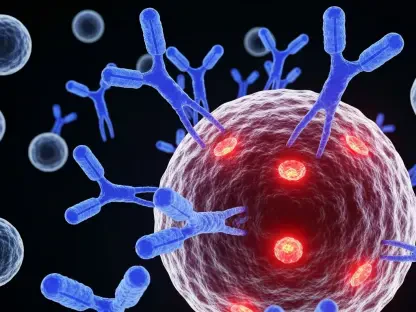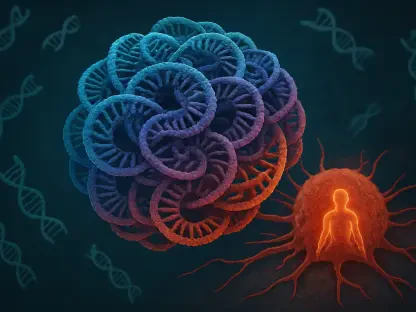Amidst rising global environmental challenges, the world is beginning to recognize synthetic biology as a pivotal tool in biodiversity conservation. This change marks significant progress within the Convention on Biological Diversity (CBD) framework, which originally viewed biotechnological advances with skepticism. Now, the focus is on harnessing these technologies for the good of ecosystems globally. The discourse has significantly evolved with recent policy developments gearing towards safeguarding biodiversity while simultaneously fostering technological advancements. The latest international policy shifts underline a reconceptualization of synthetic biology, recognizing its potential to address environmental goals effectively.
Reframing Biotechnology for Environmental Conservation
Shifting Perspectives in Biodiversity Frameworks
In a notable shift, the perception of biotechnology within international biodiversity strategies has transitioned from apprehension to acceptance. Initially overshadowed by concerns regarding safety and ecological impacts, synthetic biology is now viewed as a strategic ally in conservation efforts. Central to this evolution is the Kunming-Montreal Global Biodiversity Framework (KMGBF), which defines goals and safeties within the realm of biotechnology. One critical element, Target 17, calls for robust biosafety measures to manage biotechnology’s inherent risks while optimizing its benefits.
This recalibration reflects a deeper understanding of biotechnology as essential for achieving global biodiversity targets. Policymakers are increasingly emphasizing balanced approaches to biotechnology, which aim to mitigate risks without stifling innovation. This balanced view seeks to align biotechnology solutions with conservation strategies, encouraging sustainable development and environmental protection concurrently. Accordingly, international dialogue has pivoted toward creating frameworks that maximize technological benefits for biodiversity, with careful consideration of potential downsides.
Synthetic Biology Under Scrutiny: Policies and Initiatives
The journey to integrate synthetic biology into biodiversity policies has been marked by intensive evaluation and dialogue. Over the past ten years, efforts within the CBD framework have focused on scrutinizing these technologies for biosafety competencies. These efforts are complemented by continuous “horizon scanning” initiatives, which proactively identify emerging biotechnological developments. This structured scrutiny is crucial as it informs the adaptation of policies to accommodate rapid technological advancements without compromising ecosystems.
International bodies like the International Union for Conservation of Nature and the Organization for Economic Co-operation and Development have played pivotal roles in shaping synthetic biology’s regulatory landscape. Their collaborative efforts have broadened perspectives and facilitated the exchange of valuable insights for biotechnology governance. This international cooperation is a testament to the global commitment towards using cutting-edge science in biodiversity conservation, while ensuring safety and ethical considerations are not neglected.
The Impact of Global Cooperation on Policy Making
Building Capacity Through International Collaboration
The intricate relationship between synthetic biology and biodiversity conservation has prompted a wave of international collaboration. Countries and organizations globally are uniting to share insights, best practices, and advances in biotechnology applications. This global cooperation has been instrumental in building capacities, especially in regions where technological resources are limited. By sharing knowledge and technological expertise, countries are collectively moving towards fulfilling the key objectives set by international biodiversity frameworks.
Such partnerships have enhanced access to biotechnological tools and expertise, empowering nations to employ synthetic biology in addressing specific environmental challenges. These collaborative efforts have been facilitated by a shared commitment to global biodiversity goals, cementing synthetic biology’s role as a strategic resource. Nevertheless, challenges remain, particularly regarding equitable access to these technologies, a concern central to ongoing international discussions.
Addressing Challenges in Technology Integration
Despite growing consensus on the potential of biotechnology in conservation, numerous challenges persist. Ensuring equitable access to technologies across diverse regions is a pressing concern. The discourse on synthetic biology integration also raises ethical questions, necessitating robust frameworks to govern use and application. International dialogues continue to explore these challenges, focusing on crafting policies that advocate responsible innovation and equitable technology distribution.
As these critical conversations progress, it is essential to remain vigilant about the ethical ramifications of deploying synthetic biology. Continuous innovation necessitates adaptive governance structures capable of addressing both current and unforeseen challenges. These collaborative findings underscore the need for balanced, evolving policies that support technological integration without compromising ethical standards or ecological stability.
Fostering Informed and Balanced Policy Decisions
In the face of escalating global environmental challenges, synthetic biology is being increasingly acknowledged as a crucial asset for conserving biodiversity. This represents a transformative shift within the framework of the Convention on Biological Diversity (CBD), which initially treated biotechnological innovations with caution. Now, the emphasis is on leveraging these scientific advancements to benefit ecosystems worldwide. The dialogue surrounding this issue has evolved considerably, with recent policy developments aiming to protect biodiversity while also encouraging technological progress. These new international policy directions highlight a reimagined understanding of synthetic biology, recognizing its potential to effectively contribute to environmental objectives. As the environmental crisis deepens, this embrace of synthetic biology could catalyze effective solutions that were previously untapped, showing promise not only for environmental restoration but also for sustainability. Such developments underscore a broader recognition of the need for innovative approaches in addressing ecological dilemmas.









